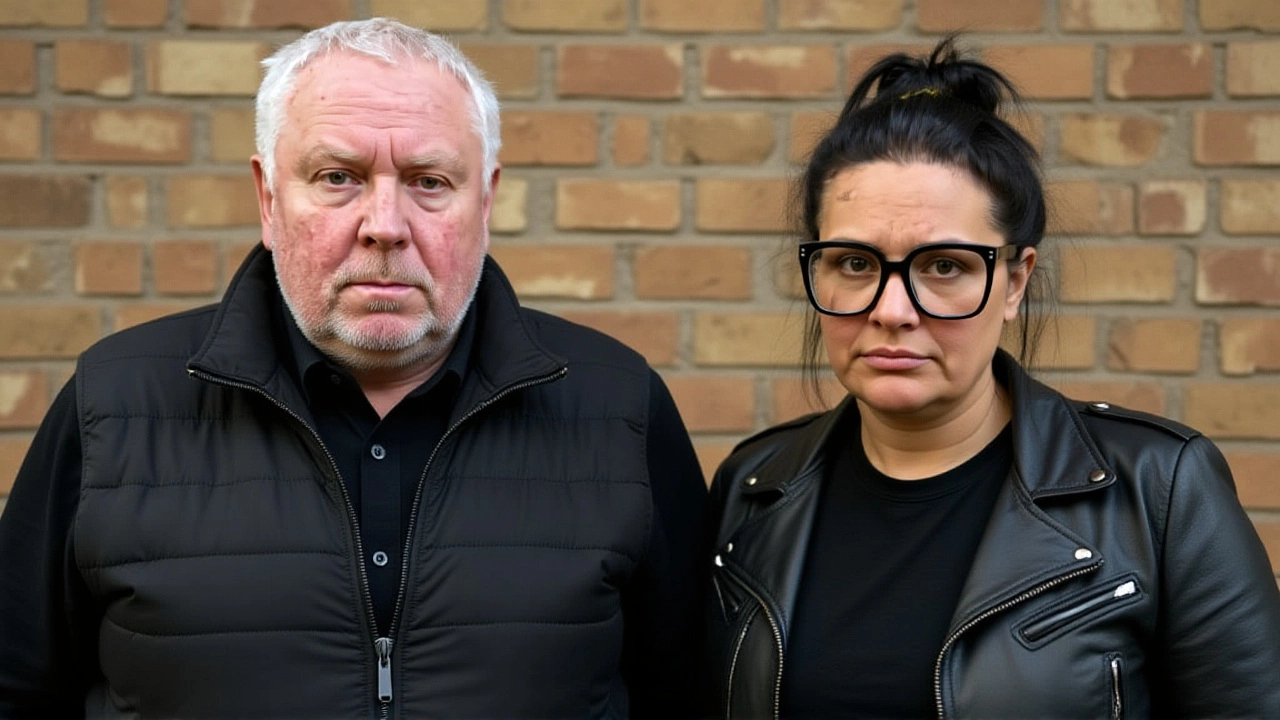When Mohammed Umar Khan, a 15‑year‑old from Sheffield, was handed a life sentence with a 16‑year minimum at Sheffield Crown Court on 22 October 2025, the case ignited fresh debate over school safety and juvenile justice. The judgment came after a six‑week trial that found Khan guilty of the murder of classmate Harvey Willgoose on 3 February 2025. The killing took place in the courtyard of All Saints Catholic High School, a setting that had previously seemed ordinary until a knife was brandished.
Background: A Feud That Turned Deadly
Friends turned rivals, Khan and Willgoose had been on good terms until a scuffle on 29 January 2025 involving two other pupils split their loyalties. Snapchat messages exchanged in the days that followed grew increasingly hostile – threats, accusations, a digital echo of a schoolyard dispute. By the time lunch rolled around on 3 February, tension had boiled over.
The Attack
At precisely 12:15 p.m., CCTV captured Khan slipping a 13 cm serrated hunting knife into the school canteen, then stepping into the courtyard. He approached Willgoose, who was unsuspecting, and plunged the blade twice into the teenager’s chest. Witnesses say Harvey collapsed within a minute, his classmates hearing a gasp before the hallway fell silent. The knife, later retrieved by police, was identified as the fatal instrument.
The Trial
Presided over by Mrs Justice Ellenbogen, the trial began in August 2025. The prosecution, led by Richard Thyne KC and Gordon Stables and instructed by Jamie Ratcliffe of CPS Yorkshire & Humberside, argued the murder was pre‑planned. They presented the Snapchat threats, the knife’s pre‑arrival, and the fact that Khan had earlier tried to provoke Willgoose on school grounds.
Khan’s defence claimed a "loss of control" triggered by years of bullying. He told teachers, "you know I can’t control it" and "I’m not right in the head" immediately after the stabbing. Yet Chris Hartley, Deputy Chief Crown Prosecutor, testified that police and investigators had dismantled the self‑control narrative, showing no evidence of an imminent threat to Khan at that moment.
The jury returned an 11‑to‑1 verdict of murder, rejecting the manslaughter defence. They also found Khan guilty of possessing a bladed article on school premises.

Previous Police Contact
What makes this case more troubling is that Khan had already drawn police attention. In December 2024, his mother discovered an axe in his bag and reported the incident to South Yorkshire Police. Detective Chief Inspector Andy Knowles explained that, because the weapon was not found in a public place at the time, the officers could only offer "safety advice" rather than make an arrest.
Reactions and Wider Implications
Harvey’s family, who have been vocal throughout the proceedings, demanded Khan’s name be released. Justice Ellenbogen complied, lifting reporting restrictions that had initially kept his identity hidden. The decision sparked a broader conversation about transparency in juvenile cases.
Lawmakers and school officials are now revisiting security protocols. The incident has been cited alongside other high‑profile knife crimes in the UK, prompting the Home Office to consider stricter penalties for under‑18s who carry weapons to school.

What the Sentence Means
A minimum term of 16 years, reduced to 15 years and 159 days after accounting for remand, is among the longest ever handed to a juvenile in Sheffield. The sentence reflects the court’s view of the attack as calculated, not a momentary loss of control. Under UK law, Khan will be eligible for parole only after serving the full term, and even then, the Parole Board will assess the risk he poses to the public.
Looking Ahead
While Khan begins his life behind bars, the community faces the ongoing task of healing. Schools across South Yorkshire are receiving additional funding for anti‑bullying programmes, and the police have pledged to improve threat‑assessment training. Whether these measures will prevent a repeat of such a tragedy remains to be seen.
Frequently Asked Questions
How does the sentence affect other juvenile offenders in the UK?
The 16‑year minimum sets a precedent that courts may impose lengthy custodial terms for serious violent crimes committed by minors, signalling a tougher stance on knife offences in schools.
What role did social media play in the escalation?
Snapchat messages exchanged between Khan and Willgoose contained threats and insults that inflamed the dispute. Investigators highlighted these chats as key evidence of pre‑meditation.
Could the incident have been prevented by earlier police action?
Police had previously intervened when an axe was found in Khan’s bag, but legal constraints limited them to giving safety advice. Critics argue that a more robust response might have averted the tragedy.
What measures are schools taking after the murder?
All Saints Catholic High School now conducts random bag checks, employs additional metal detectors, and has partnered with local charities to run intensified anti‑bullying workshops.
Why were reporting restrictions lifted?
Harvey’s family petitioned the court, arguing public interest demanded transparency. Justice Ellenbogen agreed, stating the community’s right to know outweighed the usual anonymity granted to juvenile defendants.

Written by Rupert Greenlow
View all posts by: Rupert Greenlow